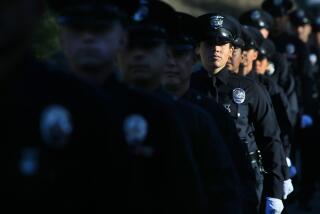Big Brother Was Watching
- Share via
Someone was watching over me, from above, while I grew up in a small town in Pennsylvania during the 1960s. Indeed, someone was watching all of us.
I’m not talking about any deity. It was the United States government, and I have proof--866,041 spy satellite photographs, taken all over the world from 1960-1972 and now available for viewing on the World Wide Web.
The photos from the U.S. spy satellite programs--code-named Corona, Argon and Lanyard--were declassified by executive order in 1995, seemingly with support of the Central Intelligence Agency, which ran the programs.
This was no high-tech operation by today’s standards. The satellite camera system used actual film stored in a capsule that would be ejected, if all went well. An airplane with a large hoop was to snare the capsule, slowed by a small parachute, before it hit the ocean. Not surprisingly, many of the capsules were lost at sea. Also, several of the approximately 130 satellites launched as part of the programs failed to reach orbit.
One former agency official disclosed at a symposium that Corona cost about $850 million, alone.
The best Web introduction to the photos is on a NASA site --
https://observe.ivv.nasa.gov/nasa/earth/exhibits/spy/spy(UNDERSCORE)1.html
-- that demonstrates how Corona photos were used to identify a Soviet missile base and military airfield. In the spirit of the post-Cold War, the site also makes available a Soviet spy satellite photo of a large U.S. aviation complex.
Turning to the huge index of the images, at https://edcwww.cr.usgs.gov/Webglis/glisbin/search.pl?DISP, you can find spy photos taken of just about any place in the U.S. But remember, this was a government program, so don’t expect an easy search.
You can find photos of specific areas, but not without diving into a morass of index numbers and technical terms. And the site is painfully slow.
I finally found my little town--Kane, Pa. (pop: 4,500)--with its photos divided among seven different classifications, including the hospital, the town proper and an adjacent experimental forest. Under the hospital classification alone, there were 15 photos available.
The photos were a disappointment. Many were obscured by cloud cover and the clear ones were of such a large area, I could barely see the town.
The CIA was able to enhance the photos to get more detail, but these techniques are unavailable on the Web.
There are photos, taken by Lanyard missions, that supposedly have close-ups of amazing clarity, but there are only 910. Checking out Kane and L.A. (there are some impressive shots of the coast), I didn’t come across any of these.
The lingering question is, why was the CIA checking out Kane and virtually every part of the U.S.? One of the government sites says that worldwide coverage was done to aid Department of Defense mapping programs.
Of Kane? A town so conservative that the daily paper was called the Kane Republican?
Maybe there was more going on in the town than I thought. Gives the place a lot more intrigue than I ever gave it credit for.
* Cyburbia’s e-mail address is [email protected].
More to Read
Sign up for The Wild
We’ll help you find the best places to hike, bike and run, as well as the perfect silent spots for meditation and yoga.
You may occasionally receive promotional content from the Los Angeles Times.







